You’ve probably already noticed that Christmas is coming. The stores are filled with lots of shiny, twinkling lights. Christmas treats are pushing all the usual groceries off the supermarket shelf, and advent calendars are everywhere.
But, what is an advent calendar other than a fun holiday tradition for the kids? In this post you’ll find all you need to know, such as what they mean traditionally, why we use them, how to make your own, and much more.
What is Advent?

The Advent season akes place over the four-week period before Christmas Day. Traditionally, Advent starts on the nearest Sunday (Advent Sunday) to the feast day of St. Andrew the Apostle and covers the following three Sundays. People have holding an Advent celebration and celebrating this special time of the year and the fourth Sunday since the 4th century.
Historians believe that the word Advent comes from the Latin word for coming or arrival, which is adventus. It means the appearance of a notable person, event, or thing.
When it was first celebrated, it is believed that it was a time when those who had just converted to Christianity prepared themselves for baptism.
There are also people who believe Advent started a little later in the 5th Century. At this time, monks would fast three times every week in November. They did this to prepare for Christmas or Epiphany. This was the time when new Christians would be baptized every year.
However, Advent didn’t become routine until Roman Emperor Constantine commemorated December 25 as the birthday of Jesus Christ. This happened during the fourth century.
Nowadays, it’s typically associated with the anniversary of Christ's birth on December 25.
What Are Some Common Advent Symbols?
There is a range of objects and colors that are often used to celebrate Advent in displays and calendars. A traditional color is purple, which represents royalty. Another one is royal blue and this color conveys anticipation and hope.
Another standard color is green and people sometimes mark the beginning of Advent by hanging Christmas greens such as ivy and garlands.
Most Advent calendars are used to make the days leading up to Christmas. However, Advent candles and wreaths are often included in religious services as well.
An Advent wreath has 4 candles, one to represent each week of Advent. You might also find them with 5 candles. The fifth is meant to be lit on Christmas Eve or Christmas Day and it is usually a much larger “Christ candle”.
-
24 Pieces of Bath Set Christmas Advent Calendar
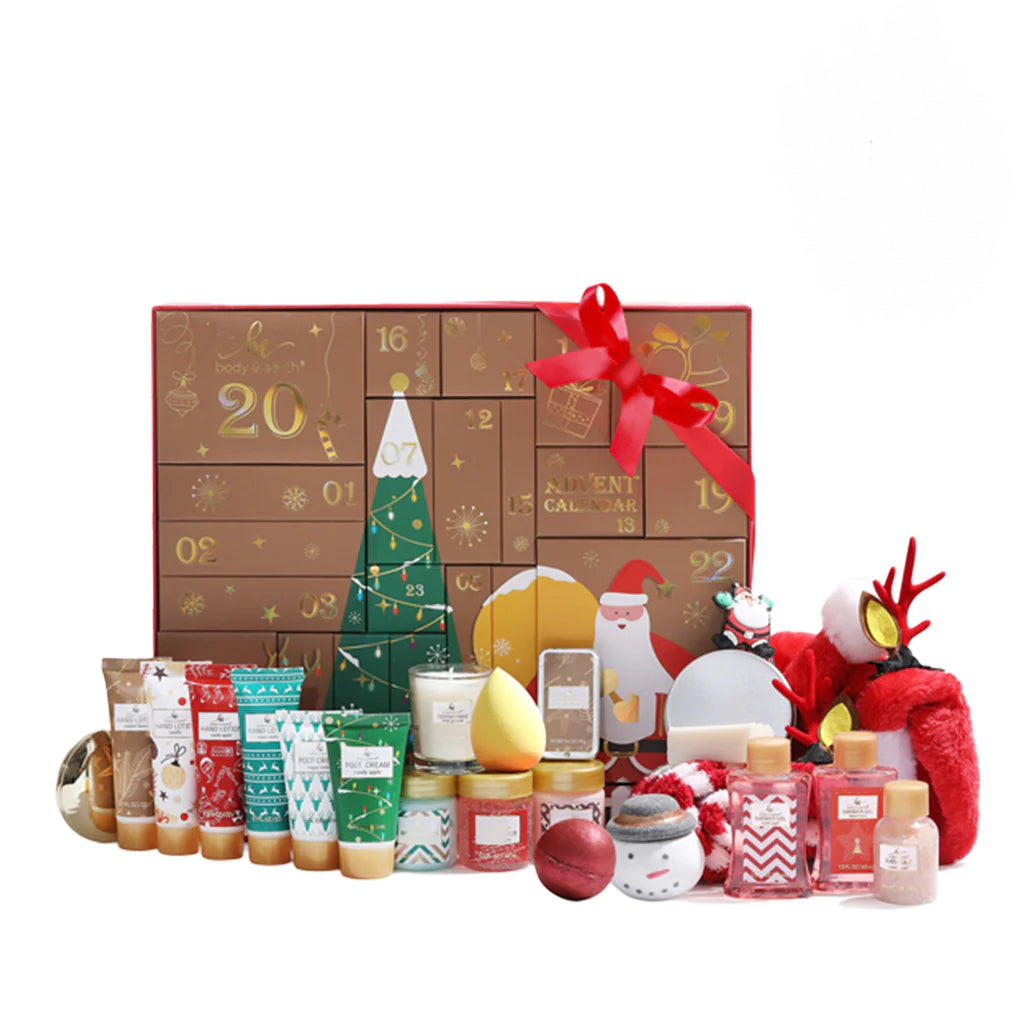 24 Pieces of Bath Set Christmas Advent Calendar
24 Pieces of Bath Set Christmas Advent Calendar- Regular price
-
$89.99 - Regular price
-
- Sale price
-
$89.99
-
Lavender Spa Bathtub Set
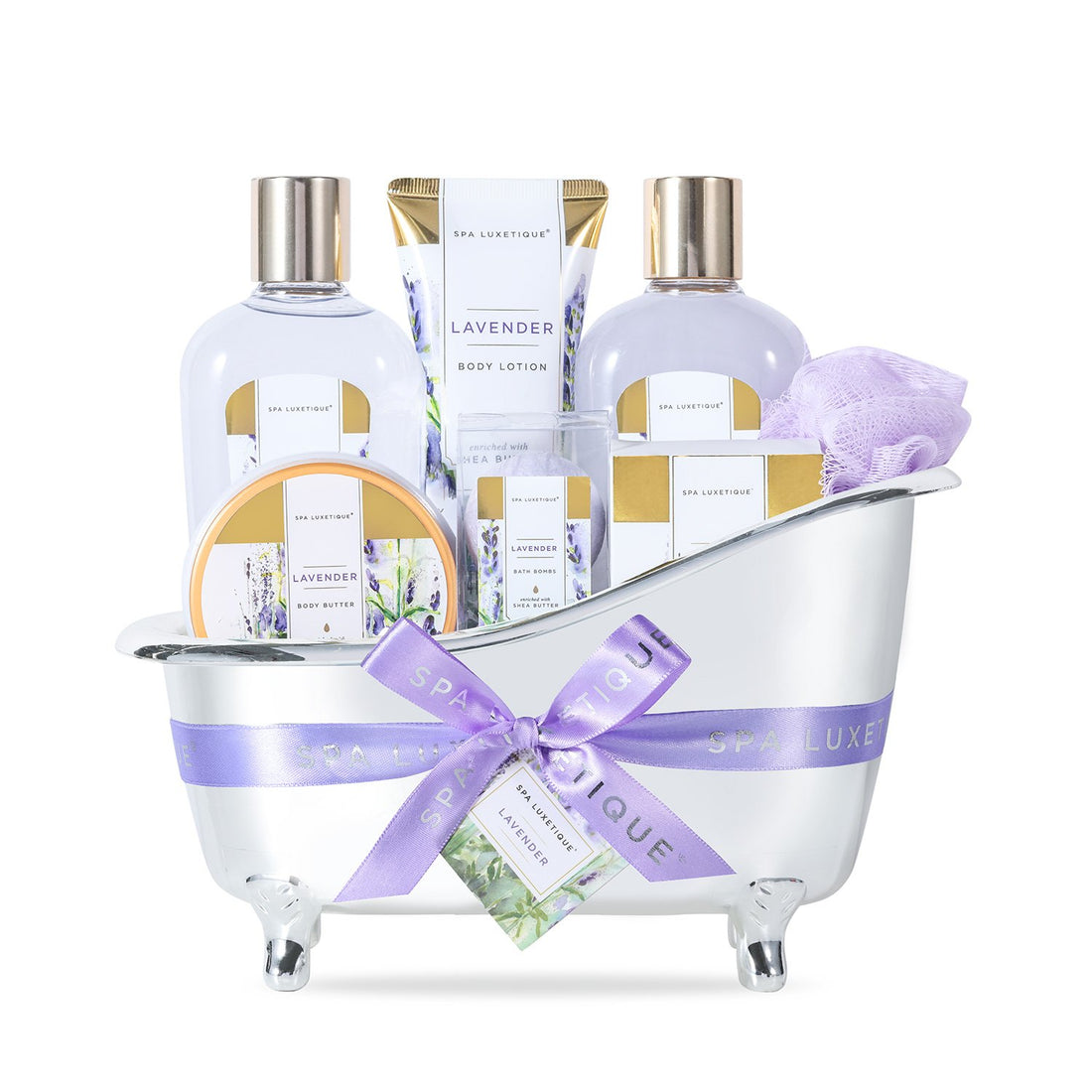 Lavender Spa Bathtub Set
Lavender Spa Bathtub Set- Regular price
-
$45.99 - Regular price
-
$44.99 - Sale price
-
$45.99
What Is an Advent Calendar and its Purpose?
Modern Advent calendars tend not to follow the period of Advent. Instead, they mark the 24 days leading up to Christmas, starting on December 1.
The most common type of Advent calendar is one that has paper calendar doors. These are opened, once every day, and reveal a Bible verse, image, or piece of chocolate.
Let’s look at some interesting facts about advent calendars and how they celebrate Christmas.
The Origins of Advent Calendars
There are many Advent calendars to choose from today, but the origin of this tradition would have been a simple tally chalk mark on a wall or door. German families started this tradition around the mid-nineteenth century.
There have been other variations of similar countdowns over the years, such as lighting a candle or hanging religious pictures on the days leading up to Christmas Eve.
Some families were making homemade Advent calendars to mark the countdown. By the beginning of the 1900s, a small number of newspapers and publishing companies has started producing printed calendars that were very basic.
Who Invented Advent Calendars?
The invention of the Advent calendar is attributed to a German printer, Gerhard Lang. He was accustomed to the idea of a homemade calendar as he had grown up with them. However, around the turn of the century and later in the 1920s, he started to design them himself.
He designed a calendar that had doors cut out of cardboard. One door was opened every day. Behind the door, people would find Bible verses or devotional pictures hidden inside.
This innovative idea from Lang makes him the father of the Advent calendar we know and recognize today.
The First Printed Advent Calendar
The first printed Advent calendar appeared in the early 1900s and was produced by Gerhard Lang. At about the same time, a German newspaper (Neues Tagblatt in Stuttgart, Germany) also decided to include an insert an Advent calendar as a gift for readers.
That being said, handmade wooden calendars were made earlier than that in 1851.
The oldest printed calendar took the form of a clock. It appeared in 1902 and was marketed as the “Christmas clock for children.” It had a dial that began with 13 and a rotating brass hand.
Why Did the Production of Advent Calendars Stop?
Production had to slow down following the outbreak of World War I but picked back up in the 1920s. During World War II, there was a shortage of paper and cardboard, so the production of Advent calendars stopped for several years. The halt in production was also because of the Nazi ban on calendars containing images.
Production resumed not long after the war ended. At the time, the leading producer of commercial Advent calendars was Richard Sellmer.
Richard Sellmer Verlag of Stuttgart was given a permit from the US that meant his company could print and sell calendars again in Germany. The company still operates to this day and is responsible for supplying millions of Advent calendars. They are sold in more than 30 different countries.
Who is Credited With the Popularity of Advent Calendars in the US?
The tradition of Advent calendars didn’t take off immediately following the war. Their proliferation in later years is accredited to Dwight D. Eisenhower. A photo of him opening an Advent calendar with his grandchildren ran in several national newspapers in the 1950s, and the rest is history as they say.
What is the Most Popular Color?
We all recognize red and green as the colors of the holiday season. However, violet and purple are more commonly used for the days leading up to December 25. This is because they are colors that represent fasting and repentance. It’s common to see priests wearing these colors and for churches to be decorated with violet.
The Most Expensive Advent Calendar
It stood 4-feet high and was in the shape of a Christmas. The tree was carved from walnut wood and burr elm and you were able to purchase it from Harrods, London, for $50,000. Inside the 24 compartments, there was a piece of organic chocolate made by Green & Black. Proceeds of the sale were to support Belize cocoa farmers.
However, the price of this one pales in significance when compared with one that was worth a staggering $4 million. It was unveiled in 2018 by Mondial Pink Diamond Atelier. It had taken 18 months to create and was handcrafted using “specially selected, natural Australian timbers and embellished with precious gemstones, gold, and silver as well as hand-made, crystal chandeliers.”
The Largest Advent Calendar
This was built in 2007 and stood in St. Pancreas train station in London. It earned a place in the book of Guinness World Records because it was 232 feet and 11 inches tall, and 75 feet and 5 inches wide. The calendar was made to celebrate the reopening of the station after it had been renovated.
The Smallest Advent Calendar
This was built by students and members of the University of Regensburg’s micro- and nanostructures group. They made it in 2007 and 5 million copies of this calendar would just about fill a postage stamp.
Does an Advent Calendar Have to be a Calendar?

Advent calendars are traditionally recognized as physical objects that you can use at home. However, there are many examples of Advent calendars that are not typical calendars.
For example, there is a tradition in Sweden, Norway, Iceland, Finland, and Demark that involves a TV or radio show.
In some locations around the world, living Advent calendars are staged. Naxos has designed a musical calendar app. Over the days leading up to Christmas, the app hands out coding and design advice.
Thanks to voice calendars, it’s also possible to use Alexa as an Advent calendar. She provides you with audio “gifts” as you countdown the days to Christmas. To access this feature, you say “Alexa, open my gift” each day. Every day you’ll get a different response that will vary from fun facts and jokes to various musical interludes.
How Does an Advent Calendar Work?
This treat-filled calendar is a way of marking off the days leading up to Christmas. Every number represents a day in December, starting with December 1.
When Do You Start the Advent Calendar?
The traditional day for starting Advent ranges from November 27 and December 3. However, more commonly, Advent calendars start on December 1 and then count down 24 or 25 days to Christmas.
Types of Advent Calendars
There are just as many if not more types of advent calendars as there are days in December. Let’s look at some of the more popular ones.
Sweet Treats

This is by far the most popular type of Advent calendar. Behind each window, there is a piece of chocolate (often in the shape of something Christmassy), candy, or some other fun snack. Some of these calendars also hide coffee or tea samples, meat, cheese, or decadent chocolate behind each door.
Alcoholic
This type of Advent calendar is probably better opened in the evening rather than the morning as it hides a variety of alcoholic treats. These might be small bottles of wine or beer to sample or liquor-filled chocolates.
Toys
These are great fun for your kids, while you’re enjoying your alcohol-filled calendar. These calendars might contain a small Lego toy, an action figure, a small doll, or a toy car.
Daily Devotions
These are considered the more traditional Advent calendar as they provide you wide a religious-themed reflection. It might be a prayer, Bible verse, sermon, Jesus teaching, or retelling of the Christmas story for you to read each day,
For Pets
There’s no reason to leave your pets out of the countdown as there are Advent calendars, especially for pets. They’ll be able to enjoy a tasty treat along with you right up until Christmas.
Games or Puzzles
There are Advent calendars that are more activity-based and these are almost as common as the sweet treat calendars. Behind each door, you might find a funny question you can ask your family or friends, a brain teaser, a quick game, a daily challenge, or a logic puzzle.
Beauty Products
For the ladies in your life, why not have a calendar that’s filled with a range of beauty products? A 24-piece bath set Christmas Advent calendar might include shower gel, soap, hand lotion, body scrub, socks, a keychain, a Santa hat, bath bombs, scented candles, and much more.
-
Cherry Blossom & Jasmine Spa Bathtub Set
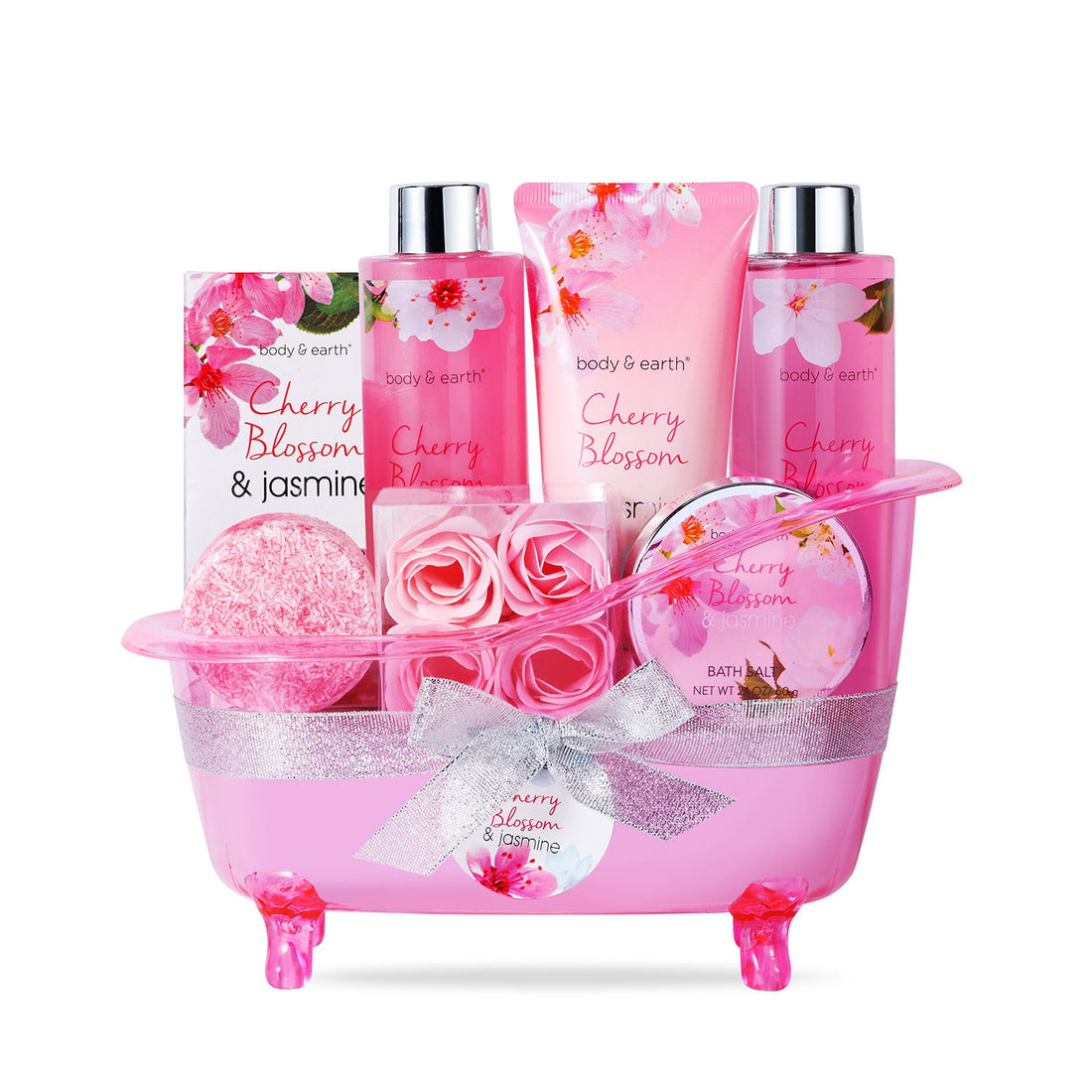 Cherry Blossom & Jasmine Spa Bathtub Set
Cherry Blossom & Jasmine Spa Bathtub Set- Regular price
-
$45.99 - Regular price
-
$44.99 - Sale price
-
$45.99
-
Vanilla Fashion Bath Set Tote
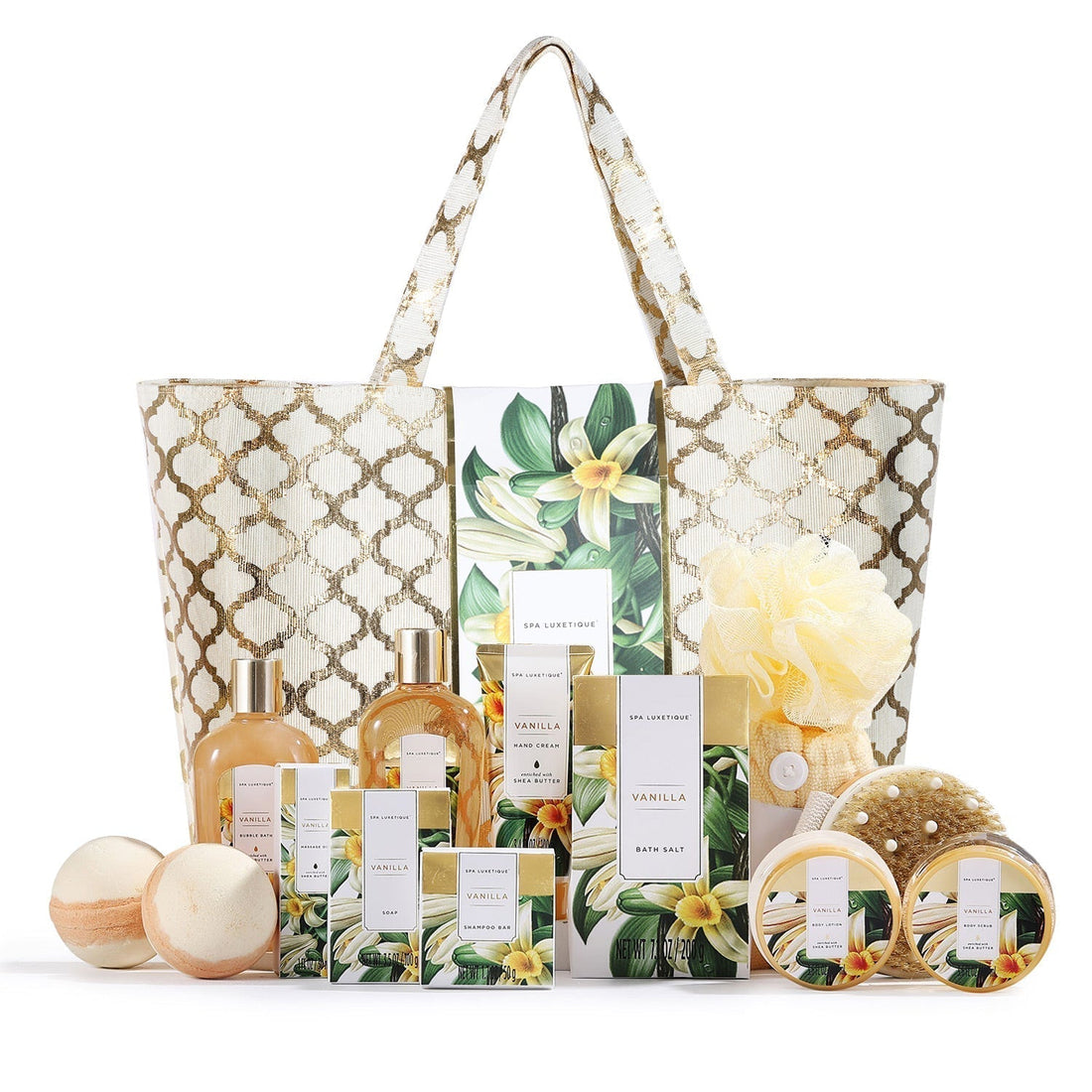 Vanilla Fashion Bath Set Tote
Vanilla Fashion Bath Set Tote- Regular price
-
$72.99 - Regular price
-
- Sale price
-
$72.99
-
White Jasmine Fashion Bath Set Tote
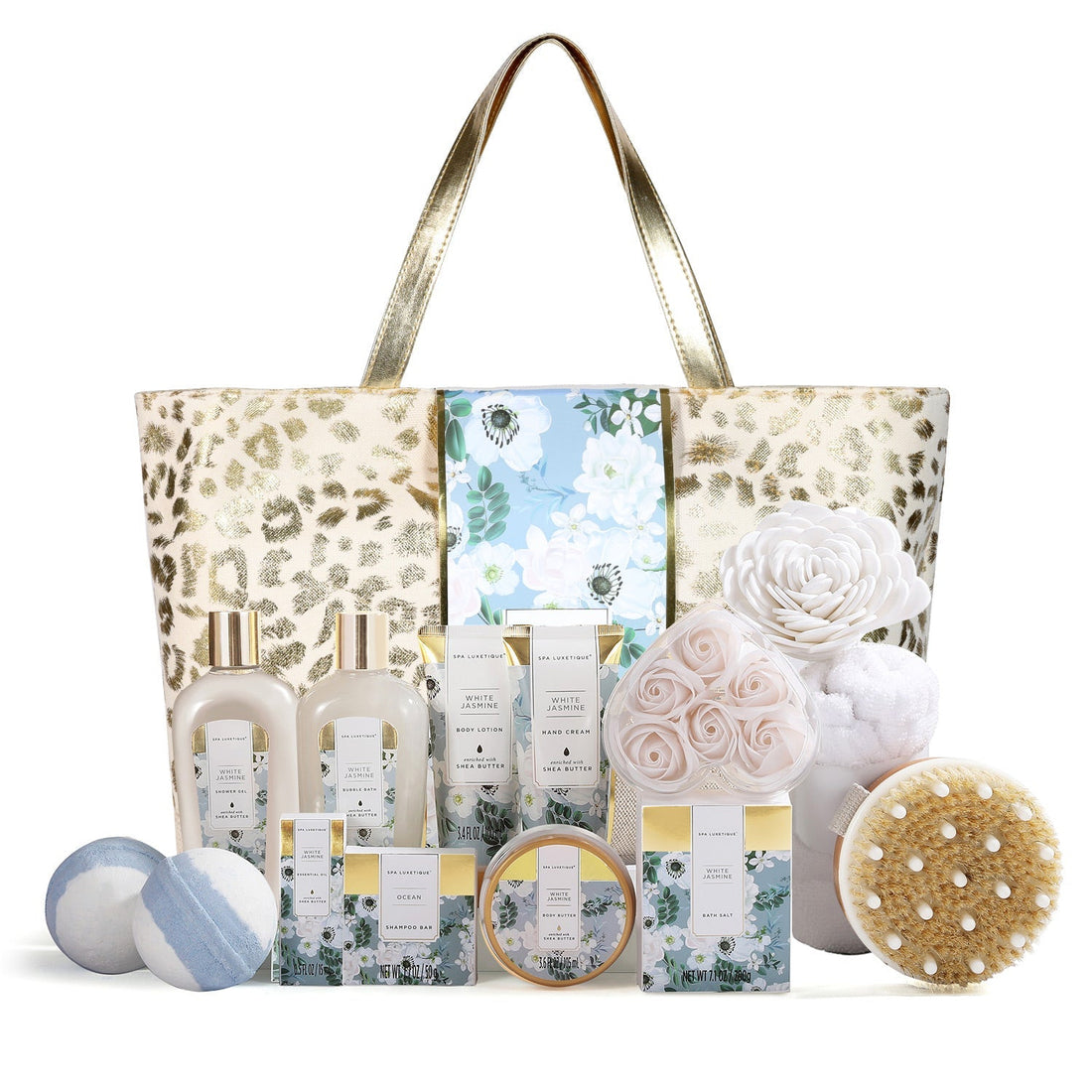 White Jasmine Fashion Bath Set Tote
White Jasmine Fashion Bath Set Tote- Regular price
-
$47.99 - Regular price
-
$72.99 - Sale price
-
$47.99
Reusable
We’re more aware of the environment nowadays and if you want to do as much as you can to reduce waste and help the planet, a reusable Advent calendar is what you need. The pockets can be used year after year. All you’ve got to do is fill them with suitable treats.
But, let’s not forget that there’s always the option of making your own.
Can You Make Your Own Advent Calendar?

Of course, you can make your own Advent calendar and it is becoming increasingly popular. With a homemade calendar, you can personalize it however you want.
You could convert wood drawers, coffee cans, old boxes, and toilet paper tubes, or construct your own calendar using material or cardboard. Then all you’ve got to do is fill each compartment with a Christmas treat and decorate the calendar however you want.
Alternatively, hang numbered bags on your Christmas tree and open the final bag on Christmas morning.
What to Put In an Advent Calendar?
If you’re wondering what to put in your Advent calendar, here are some ideas:
-
Fun-holiday to-do ideas
-
Love notes
-
Fun family activities
-
Festival ornaments to make or color
-
Notes to celebrate the season
-
Special trinkets
-
Titles of movies to watch together
-
Books
-
Christmas recipes to make
How to Use an Advent Calendar With Your Family?

You can use an Advent calendar to introduce the Advent tradition into your family. There are many styles of calendar available, many of which are obviously Christian-themed advent calendars.
This type of calendar allows you to focus on Christ during the Christmas period with a nativity-themed calendar. Also, you’ve got the option of choosing calendars that are more Bible-related and tell the history of God’s people before Jesus. Quite often, there will be short devotionals that have a key role to play in the calendar.
If your family doesn’t want or need an overtly religious calendar there are plenty of other types to choose from. For example, you can build up the excitement of Christmas with a cardboard calendar filled with chocolate treats, a Lego calendar, or one hiding activities you can do together as a family.
-
Lavender Fashion Bath Set Tote
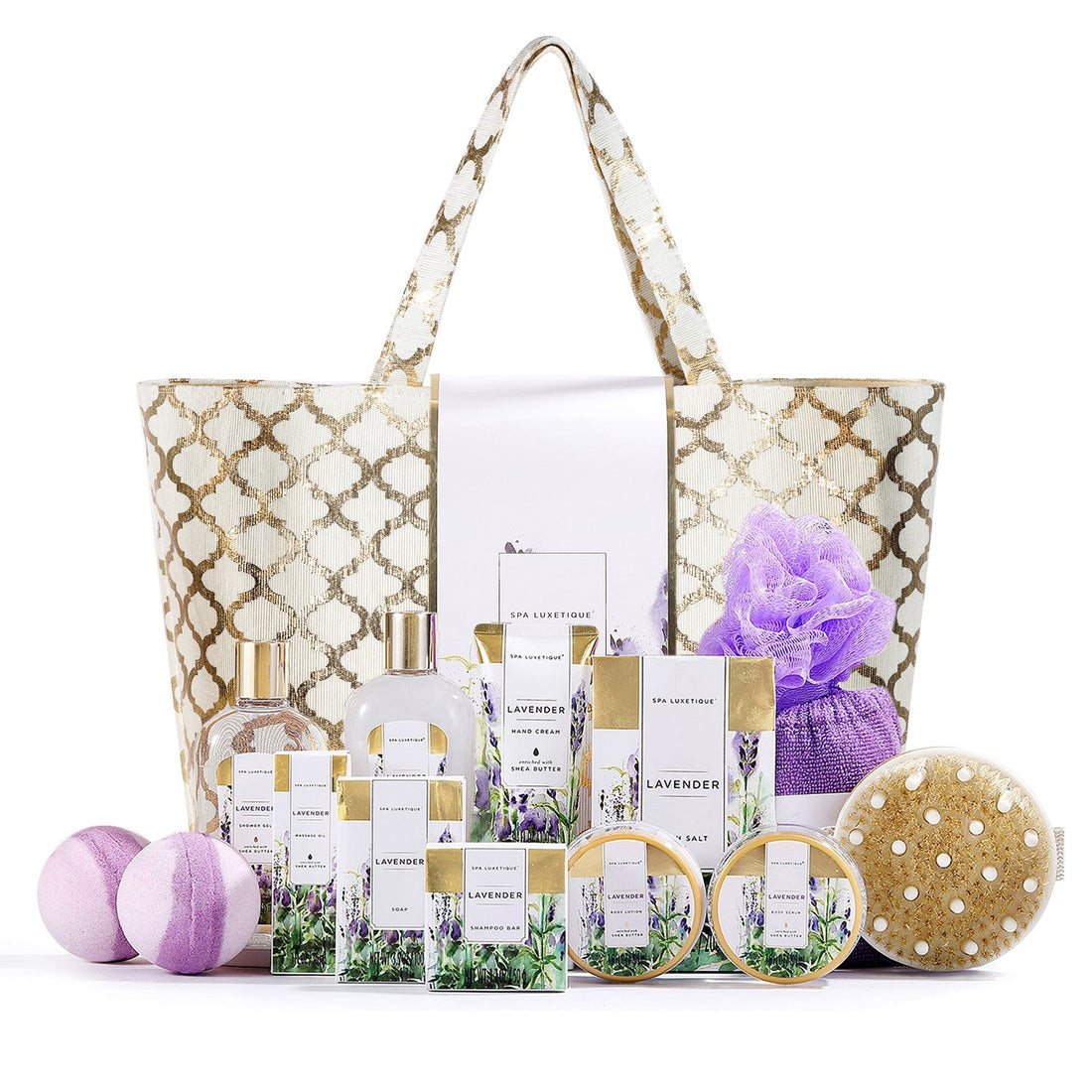 Lavender Fashion Bath Set Tote
Lavender Fashion Bath Set Tote- Regular price
-
$65.99 - Regular price
-
$0.00 - Sale price
-
$65.99
Conclusion
When you’re reading this post, Christmas and Advent could be just around the corner so there’s no time like the present to start shopping for your Advent calendar. Alternatively, get your thinking cap on and make one for yourself.
FAQs
1. Do you start the Advent calendar on 1 or 25?
There are two ways to look at this question. Should you count down to Christmas or count up? Historically, the correct place to start is with the box or door labeled “one”. That way, you’re counting up and building the excitement before Christmas day.
2. How many days is an Advent calendar?
Advent calendars start on December 1 and end on Christmas Eve or Christmas Day. In other words, there are 24 or 25 days in an Advent calendar.
3. What is the tradition of the Advent calendar?
Advent calendars come in a variety of forms, but the tradition is thought to come from the mid-nineteenth century when families in German started counting down the days until Christmas Day. They did this by lighting a candle, tallying chalk marks on the wall or a door, or hanging religious pictures each day.
4. Why do we have chocolate at Advent?
It was Cadbury, the chocolate manufacturer, that introduced chocolate Advent calendars for the holiday season in 1971. However, they didn’t take on immediately and it was two decades before Cadbury’s put chocolate Advent calendars into full production.











